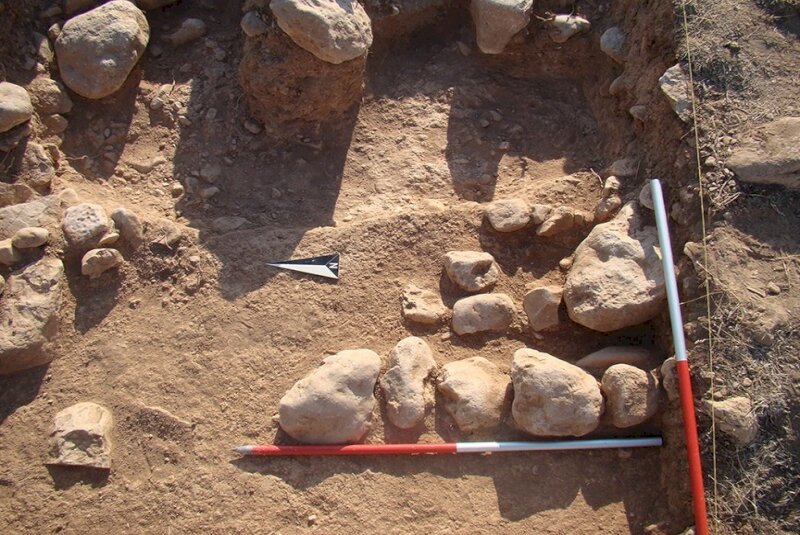Archaeological survey yields traces of Iron Age settlement, metal-melting kiln in west-central Iran

TEHRAN – The first phase of a demarcation project has recently come to an end on Tepe Kuzechi in west-central Iran, yielding traces of an Iron Age settlement and other findings, including a metal-melting kiln.
Tepe Kuzechi is situated adjacent to the historically-rich Chehrabad Salt Mine in Zanjan province, where several salt men and their personal belongings have been discovered so far.
One of the important goals of the demarcation project was to identify possible ancient settlement areas around the salt mine, the provincial tourism chief, Amir Arjmand, said on Wednesday.
Since Kuzehchi hill is the only ancient site around the mine that had superficial evidence from the Iron Age and the Achaemenid period, it became the subject of the demarcation project, which began on September 11 and ended on October 26, after obtaining a permit from the Research Institute of Cultural Heritage and Tourism, the official explained.
Archaeological survey shows that the salt mine was exploited during the Achaemenid and Sassanid eras as major ancient deposits and collapsed tunnels are related to these two periods, Arjmand added.
Salt mummies are the highlights of the findings in the mine. In 1993, miners in the Douzlakh Salt Mine, near Hamzehli and Chehrabad villages in Zanjan Province, accidentally came across a mummified head, dated to 300 CE. The head was very well preserved, to the extent that his pierced ear was still holding the gold earring. The hair, beard, and mustaches were reddish, and his impressive leather boot still contained parts of his leg and foot.
However, in 2004, the miners discovered yet another “saltman”, which was followed by further excavation unearthing remains of a human body along with a large number of artifacts made of wood, metal tools, clothing, and pottery. In 2005, a systematic excavation began, three more mummies were excavated, and a sixth remained in situ, due to lack of funds for its storage. The context of the remains suggested that a collapse in the mine had caused the death of the miners in question.
The first mummy, dubbed the “Saltman”, is on display in the National Museum of Iran in Tehran. He still looks very impressive. This particular “saltman” was originally dated based on the archaeological material found with him. Later, the mummy was carbon dated, which placed him in 500 CE (1750 BP, that is, “before present” or 1750 years ago), the height of the Sasanian Empire. The second “saltman” was carbon-dated to 1554 BP, which placed him in the same era as the first “saltman”, the Sasanian era.
The third, fourth, and fifth “saltmen” were also carbon dated. The third body was dated and placed in 2337 BP, the fourth body in 2301 BP, and the fifth mummy was dated to 2286 BP, placing them all in the Achaemenid period. The individual “saltman” has a few secrets of their own, for instance, the first “saltman” that was discovered had the blood type B+, and 3D imaging of his skull revealed fractures around his eye and other damage that occurred before death by a hard blow to the head. His clothing (the impressive leather boot) and his gold earring, show a person of some rank; the reason for his presence in the mine still remains a mystery.
Saltman No. 5 had tapeworm eggs from the Taenia sp. genus in his system. These were identified during the study of his remains. The find indicates the consumption of raw or undercooked meat, and this is the first case of this parasite in ancient Iran and the earliest evidence of ancient intestinal parasites in the area. The best preserved and probably the most harrowing of the saltmen is saltman No. 4, a sixteen-year-old miner, caught in the moment of death, crushed by a cave-in.
AFM/MG

Leave a Comment